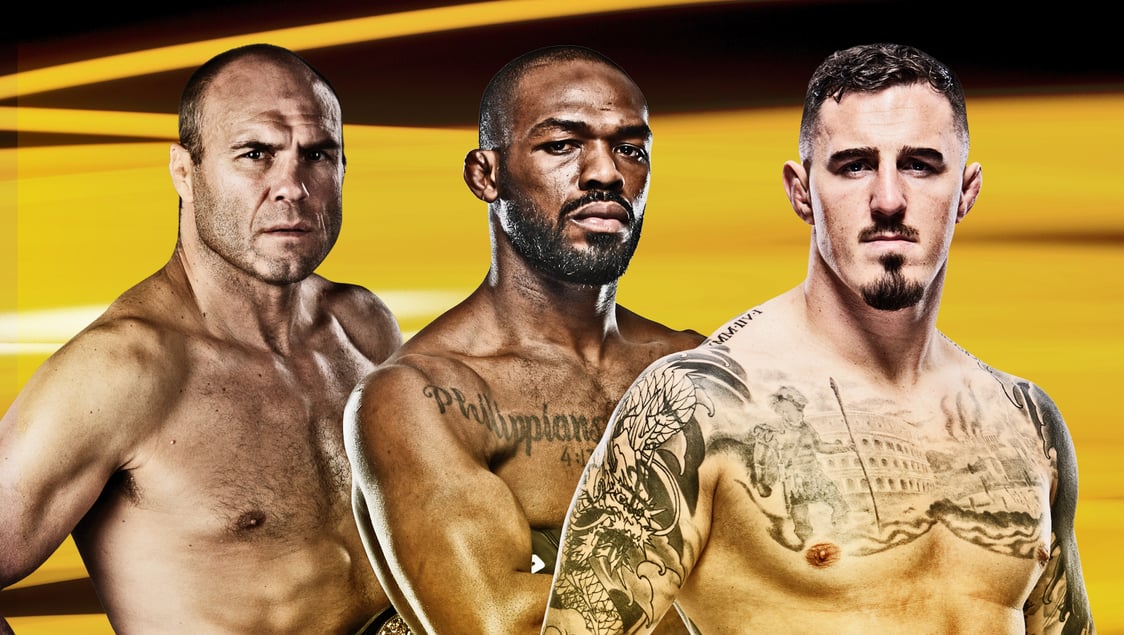
Issue 202
January 2024
The UFC is facing a pivotal moment as it builds a fresh legacy on the foundations of its next-generation stars. Here’s who you can expect to light up the fight roster in 2024 and beyond.
Gracie. Shamrock. Severn. Abbott. In the initial days of the UFC, those were the four names that rang out the most, serving as the cornerstones for the Ultimate Fighting Championship as the company entered the pay-per-view and combat sports space.
They were the competitors that resonated with the audience right away, and the rivalries that emerged between them, the fights that transpired — and those that didn’t — became early must-see attractions for fans of the burgeoning new sport.
Inside the Octagon, Gracie was the best of the bunch, amassing a 12-fight unbeaten streak to begin his career, registering wins over Shamrock and Severn while claiming victory at UFC 1, UFC 2, and UFC 4.
When he couldn’t continue at UFC 3 following his exhaustive battle with Kimo, Shamrock withdrew from his semifinal bout as well; if he wasn’t going to get a chance to face Gracie, he wasn’t going to stick around.
Severn won UFC 5 and the Ultimate 95 tournament with a loss to Shamrock in the UFC 6 Superfight Championship bout sandwiched in between. Abbott arrived on the scene at UFC 6, a burly brawler with a Jim Neidhart goatee, a couple of false teeth where his chiclets used to reside, and a style that made him an instant favorite amongst early fans.
Along with a cadre of supporting characters that turned up frequently and all stood out for their own reasons — Oleg Taktarov, Kimo, Pat Smith, Paul Varelans — this group was the initial foundation upon which the UFC was built.
CHANGING OF THE GUARDS
Every era has featured its own collection of standout competitors and memorable talents that carried the promotion, both in terms of performance and catching the eye of the public.
Tito Ortiz, Randy Couture, and Chuck Liddell formed a triumvirate of popular, successful talents in the light heavyweight division ahead of Couture’s retirement and eventual return at heavyweight, joining welterweight champion Matt Hughes and the rest of the Miletich Fighting System crew, “The Prodigy” B.J. Penn, and Rich Franklin as the next core group headlining UFC events and captivating an expanding audience in the years leading up to and following The Ultimate Fighter boom.
That group was joined and eventually gave way to Anderson Silva, Georges St-Pierre, and a host of talents that had built a name for themselves while competing in Pride and became instant foundational pieces upon arriving in the UFC; fighters like Quinton “Rampage” Jackson, “The Axe Murderer” Wanderlei Silva, Mauricio “Shogun” Rua, and Dan Henderson.
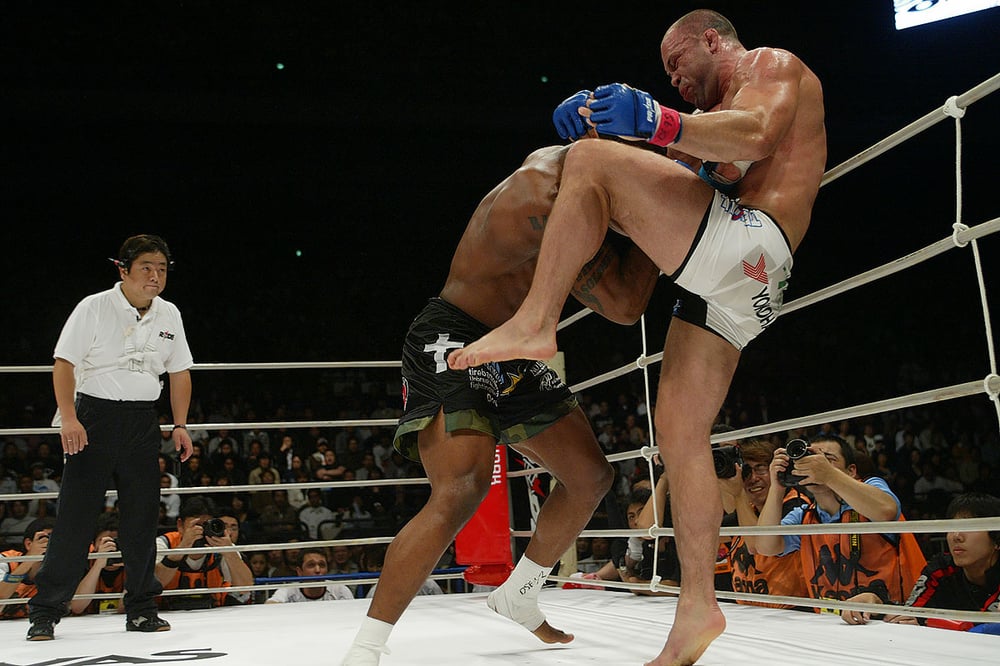
DAWN OF TUF
Early TUF winners quickly became stars, with Forrest Griffin, Rashad Evans, and Michael Bisping all getting strong pushes out of the gate and making the most of them. At the same time, fellow cast members from each of those first three seasons emerged as strong supporting characters that fans recognized, liked, and enjoyed seeing compete on the regular.
Over the last dozen or so years, the UFC has been running at warp speed, establishing itself as a mainstream entity with massive broadcast deals with FOX and now ESPN, and superstars emerging, thriving, and fading away in what sometimes feels like a blink of an eye.
Brock Lesnar arrived, bringing with him a professional wrestling audience and an abundance of natural ferocity and athleticism, instantly emerging as the biggest name in the sport.
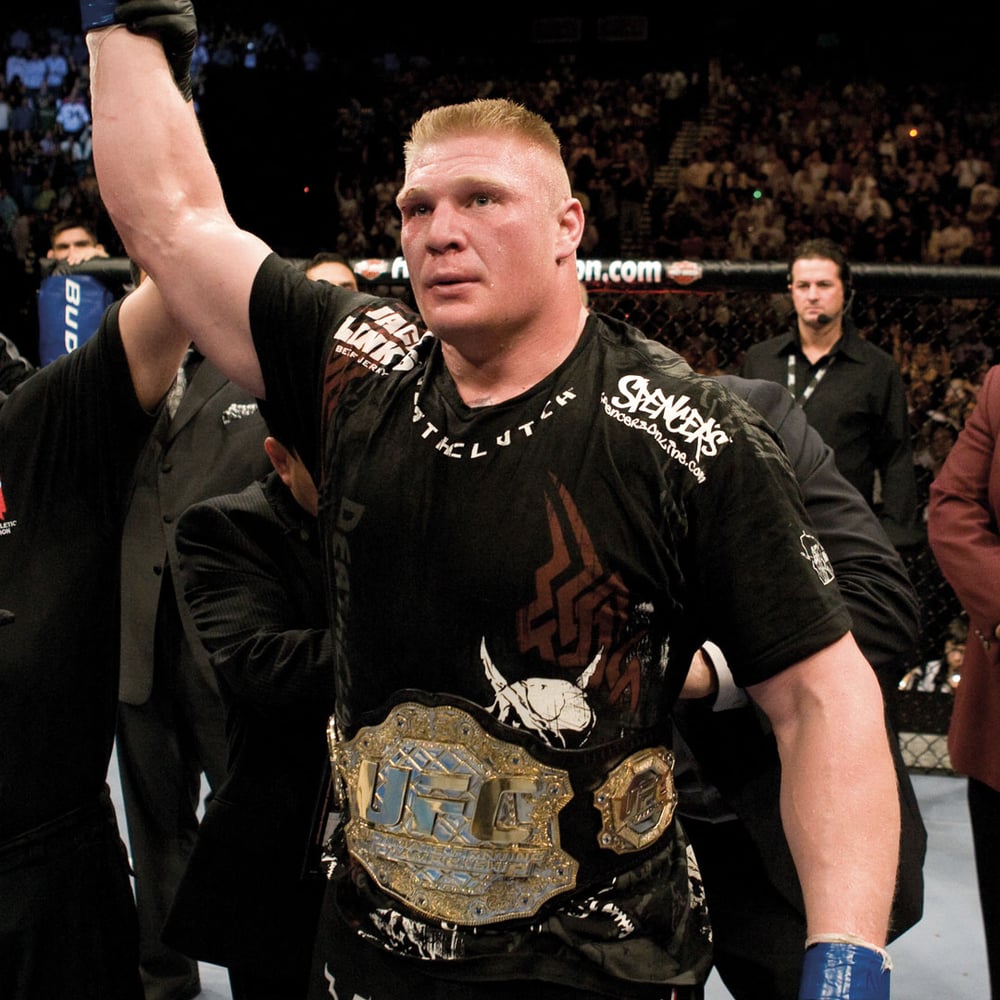
A preternaturally talented kid from Upstate New York named Jon Jones laid waste to a series of legends, securing and retaining the light heavyweight title following a period where no one seemed capable of holding onto the belt for any time.
Standouts from the WEC and then Strikeforce migrated to the Octagon after each of those operations were shuttered, with Jose Aldo and Dominick Cruz grandfathered in as champions before Ronda Rousey broke the gender barrier in the UFC and began her ascent to global superstar status.
Conor McGregor turned up and set the sport on its head. Khabib Nurmagomedov and Tony Ferguson beat everyone in their path.
Daniel Cormier and Alexander Gustafsson emerged as rivals for Jones, though neither was able to beat him.
The depth in each division increased. New names continued to arrive and thrive, forcing them to greater prominence. In contrast, others became stalwarts in their respective weight classes, and the type of steady, reliable hands needed to carry a hefty broadcast schedule and constant demand for more familiar names filled out each card.
But as the UFC’s 2024 campaign gets underway in earnest after a two-event January, it feels like the company is at a major crossroads when it comes to its current collection of stars and like the time is now to make a heavy investment in a group of talents that can become the next foundational piece for the promotion going forward.
AN AGING, FADING GROUP
Who are the biggest names in the UFC right now?
Conor McGregor undoubtedly remains at the top of that list even though he hasn’t competed in a couple of years, and his return to the Octagon is still TBD.
Jon Jones is right up there. Dustin Poirier. Justin Gaethje. Max Holloway.
Israel Adesanya was in that class, or maybe just a tick below, but two losses in three fights dampen your shine just a little. The same applies to Alexander Volkanovski, though the featherweight champ caught losses while daring to be great, which is hard to hold against him.
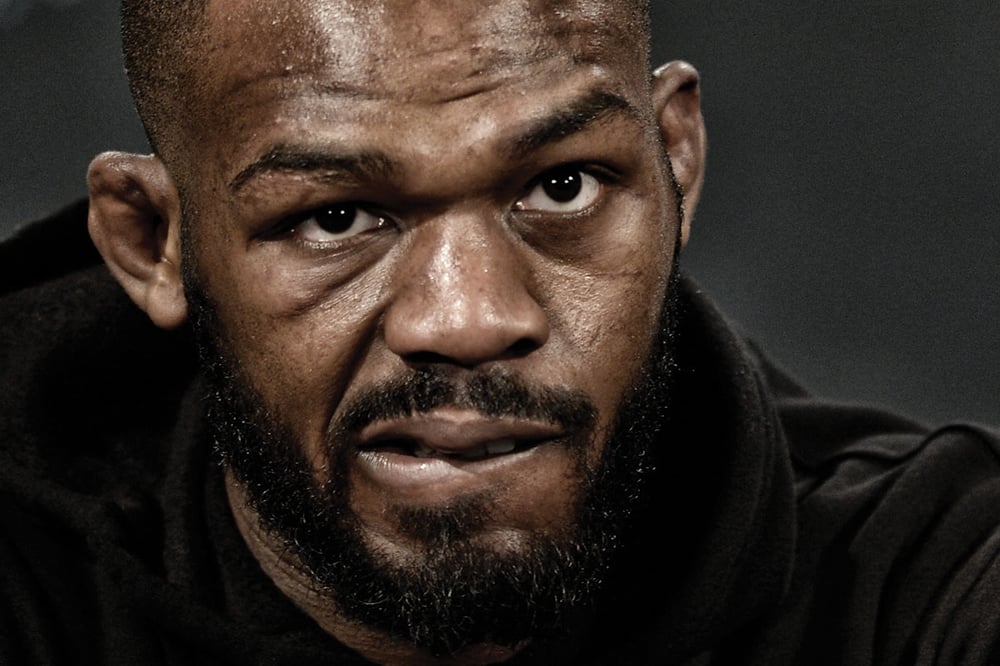
Jones is 36 and will turn 37 in the summer when he’s expected to be ready to compete again after having torn his pectoral muscle in November. McGregor, Gaethje, and Volkanovski are all 35 with birthdays in the back half of the year, while Poirier just hit that milestone on January 18. Adesanya is 34, and Holloway is the “baby” of the bunch at 32.
While all are still headlining talents — and Volkanovski currently holds gold as of the time of this writing — you’d be hard-pressed to find anyone who believes any member of this group is on the cusp of a renaissance or making a real, meaningful, extended run at the top of their respective divisions over the next couple years.
EXIT PATTERNS?
Jones has more or less said he’s sticking around to face Stipe Miocic and then calling it quits. McGregor is as likely to never fight for the UFC again as he is to log three fights in the next two years, while Poirier, Gaethje, and Holloway have all been through enough hellacious battles inside the eight-sided proving ground to age them 3-5 years each, and that’s before the final two men in that triumvirate duke it out for the symbolic BMF title at UFC 300 in April.
Adesanya has the least miles on his tires in an MMA sense, with 27 career appearances, but he also logged upwards of 80 kickboxing bouts. He talked about taking an extended break following his loss to Sean Strickland last year, though he’s since reversed course.
Established former titleholders like Charles Oliveira (34) and Kamaru Usman (36) are in the same age range as the above group, and current champ Zhang Weili (34) and Alexandre Pantoja (33) are each getting up there as well, with all four having been through a series of battles inside the Octagon as well.
Of the 14 UFC pay-per-view events in 2023, eight were headlined by an athlete mentioned in this group, with Volkanovski accounting for three of those assignments and Poirier and Gaethje facing one another at UFC 291.
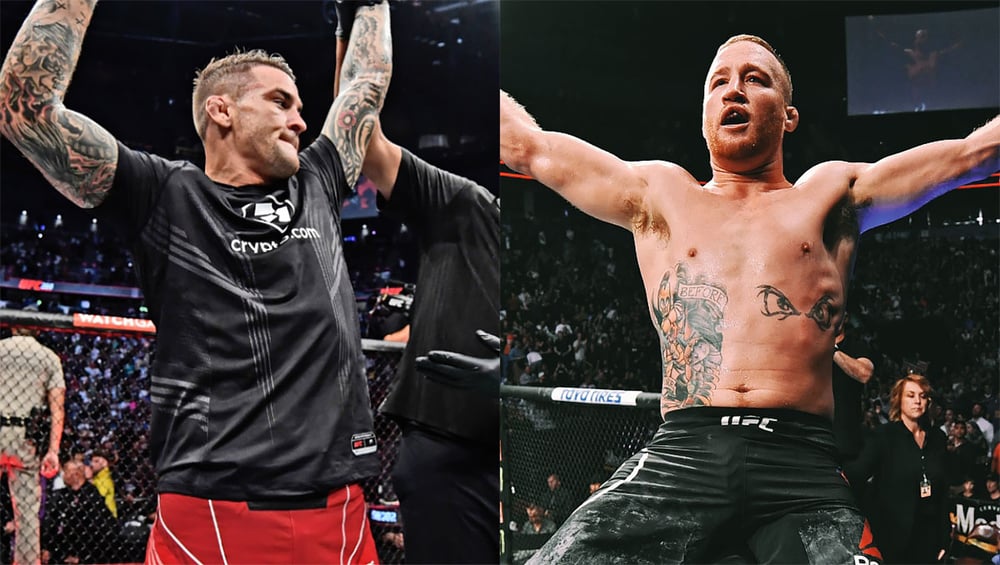
Two others were topped by competitors that have since retired — Glover Teixeira and Amanda Nunes, who pulled the plug following their fights at UFC 283 and UFC 289, respectively.
Two others featured former bantamweight champ Aljamain Sterling, who is also in the “32 and older” club. In contrast, the two remaining shows — UFC 295 and UFC 296 — featured 36-year-old Alex Pereira winning the light heavyweight strap and 35-year-old Colby Covington once again failing to win the welterweight title.
In stick-and-ball sports, one of the most challenging things to do is finesse the transition from a successful, veteran-laden group to a younger but still competitive squad, as there are only so many positions available, and those entrenched names don’t really want to cede any ground to the emerging group nipping at their heels.
But the UFC isn’t encumbered by such restrictions or required to finesse anything. Now is the time for the promotion to shift its focus to the next generation of fighters that can potentially replace its aging crop of contenders and carry the torch for the organization in the coming years.
THE NEW FOUNDATION
Evaluating and forecasting talent is a complex and inexact process, as there are myriad variables to consider and any twists and turns that can happen throughout someone’s career that keep them from reaching the heights many envision for them.
Conversely, there are always athletes who emerge “out of nowhere” and become greater than those prognosticators and analysts ever expect.
That said, looking at the current crop of UFC titleholders immediately showcases a group of proven, skilled competitors that can all — perhaps to varying degrees — be foundational pieces for the promotion for the next couple of years.
Bantamweight champion Sean O’Malley is 29, connects with a different generation of fans, and combines social media presence, polarizing charisma, and proven skill in the Octagon to be a main event fixture until the end of his career, title or no title.
Alexa Grasso is 30, the reigning flyweight champion, and an icon for a massive, fight-loving audience in Mexico and Latin America. Newly minted middleweight ruler Dricus Du Plessis turned 30 six days before dethroning Sean Strickland in Toronto.
Interim heavyweight champ Tom Aspinall may not be someone who courts attention in his everyday life. Still, his professional talents make him an obvious candidate to build around, given that the 30-year-old could conceivably fight for another decade or more if he’s so inclined.
Fellow Brit Leon Edwards turned 32 last summer, has successfully defended his welterweight title twice, and has a host of challengers queueing up for their chance to try and wrest the belt away from him. At the same time, lightweight ruler Islam Makhachev is already recognized as one of the best pound-for-pound fighters on the planet and just turned 32 at the end of October.
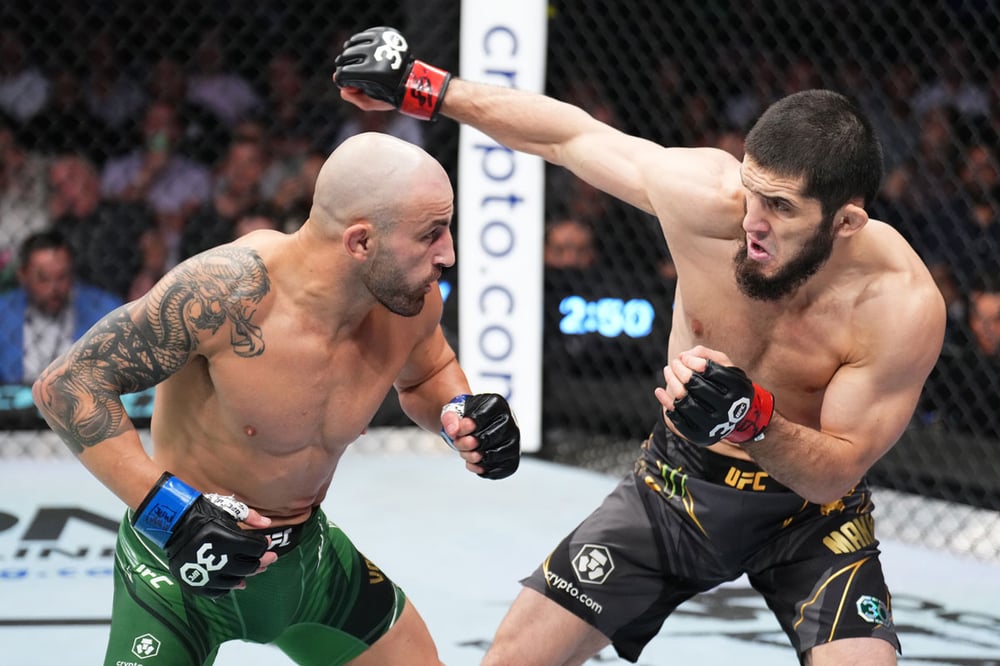
In mid-February, Ilia Topuria unseated Volkanovski atop the featherweight division, pushing his record to 15-0 with a second-round knockout of the Australian. Already a burgeoning star in Spain, this 27-year-old’s victory accelerated his rise to fame at home and should have the same impact abroad.
But it’s not just current champions or recent contenders that need to be considered here; this extends to a broader swath of up-and-coming competitors that are either already on the cusp of contention or have a realistic chance to get there should things break the right way.
Let’s do this division-by-division, shall we?
Heavyweight
This prediction may be a shocker to some who have endured years where the big boy ranks felt like a bit of a wasteland, but the future of the heavyweight division feels promising.
In addition to Aspinall, the trio of Sergei Pavlovich, Jailton Almeida, and Ciryl Gane all feel like the top of the food chain talents that should remain in the title picture for the foreseeable future. Sprinkle in a little Curtis Blaydes and some Serghei Spivac, cross your fingers that Alexandr Romanov takes another step forward, and the UFC might even have a robust collection of sub-35 fighters to work with going forward.
Light Heavyweight
Current champ Alex Pereira is 36, but it doesn’t look like he’s going anywhere soon, so he should be someone the promotion builds around over these next few years. Former champs Jamahal Hill and Jiri Prochazka and former title challenger Magomed Ankalaev must also remain prominent figures in the division.
One name to watch for the future? Vitor Petrino, the 26-year-old Brazilian, moved to 10-0 as a professional with a second-round knockout win over former Cage Warriors champ Modestas Bukauskas in November.
Middleweight
Long considered the shallowest division on the men’s side of the roster, the 185-pound ranks feature some compelling names to build around in the future.
Bo Nickal is one of the most decorated collegiate wrestlers to ever transition to the Octagon, Khamzat Chimaev, and Ikram Aliskerov each loom as potential title threats (and there is history between them, too!), while Brendan Allen has been on a great run of form and is still only 28.
And listen: don’t be surprised if Joe Pyfer emerges as a contender at some point soon either; he’s solid in every facet, strong as hell, and driven in a different way than many of his peers.
Welterweight
Along with the 32-year-old champion Edwards, welterweight features five athletes who could all be in the mix and should receive main event opportunities for the next several years.
Shavkat Rakhmonov and Ian Machado Garry are the two obvious candidates, as each is undefeated, stationed inside the Top 10, and near the top of most “future champions” lists that get cobbled together. Jack Della Maddalena and Sean Brady were scheduled to face each other last year and need to be given a chance to flourish, as each has shown a ton of promise, while the youngster to track in the division is Michael Morales, the undefeated 24-year-old from Ecuador who posted a pair of wins in both his first and second years on the roster.
Lightweight
Makhachev is already one of the foundational cornerstones of the UFC. Still, Arman Tsarukyan should be given every opportunity to join him, especially if he continues his run of dominant form through his UFC 300 showdown with Charles Oliveira.
At the moment, Tsarukyan is the only “on the cusp” fighter in the division, but athletes like Jalin Turner (28) and Rafael Fiziev (30) should be Fight Night main event staples as all-action talents that bring the goods every time out.
As far as a long-range name to track, Nurullo Aliev is 23 and was going to be given the “showcase fight at Madison Square Garden” treatment in November before he was forced to withdraw. He’s green, but he has a clear upside.
Featherweight
Joanderson Brito and Diego Lopes faced one another on the opening week in Season 5 of Dana White’s Contender Series (DWCS), with the former defeating the latter by technical decision in a bout that was halted when Lopes was rendered unable to continue following an accidental eye poke.
Brito garnered a contract and has posted four straight wins since dropping his debut, most recently snatching up the neck of Jonathan Pearce in mid-November, while Lopes impressed on short notice at UFC 288 against Movsar Evloev before making quick work of both Gavin Tucker and Pat Sabatini.
With the number of aging contenders in the Top 15, both could make a run toward the top of the division in the coming years and are, at worst, perpetually entertaining fighters to showcase routinely.
Bantamweight
Former champ Petr Yan turned 31 in early February, and while he’s currently on a three-fight skid, no one should be surprised if he returns to the top of the heap in the 135-pound weight class. His next opponent, Song Yadong, turned 26 at the start of December and already sports a 10-2-1 record inside the Octagon.
If he can ever fight with any kind of consistency, Umar Nurmagomedov profiles as a top-end talent much like his cousin, while Japanese prospect Rinya Nakamura and the Basharat Brothers, Javid, and Farid, are developing fighters to keep tabs on for the time being.
Unfortunately, the women’s 135-pound weight class feels somewhat barren, at least in foundational pieces. New champ Raquel Pennington is 35, presumptive No. 1 contender Julianna Peña is 34, and Mayra Bueno Silva, who lost to Pennington at UFC 297, turns 33 in the summer.
Flyweight
Ex-champ Brandon Moreno (30) should remain a prominent name both in the division and the UFC for the next couple of years, while the man he was initially scheduled to face in Mexico City towards the end of February, Amir Albazi (30), and his replacement, Brandon Royval (31), each should as well.
But on the men’s side of things, the real excitement comes in the form of Tatsuro Taira (24) and Muhammad Mokaev (23), who have earned five victories inside the Octagon while earning spots in the Top 15. Both have legitimate championship upside and should be core figures for the UFC to build around for the next 5-10 years.
There is even more reason for excitement on the women’s side of things, where Grasso has many ascending names working into contention to potentially worry about.
Blanchfield, profiled elsewhere in this issue, tops the list, as the 24-year-old American is already poised to face Manon Fiorot in a title eliminator towards the end of March. Joining her are Maycee Barber (25), Natalia Silva (26), Ariane Lipski (29), Karine Silva (30), and Tracy Cortez (30), who are all ranked and a combined 26-7 inside the Octagon.
Strawweight
While the 115-pound weight class features a collection of competitors aged 30 and under, none of them feel like foundational pieces.
Loopy Godinez is already a workhorse in terms of how frequently she competes and could get there if the improvements she’s shown since relocating to Guadalajara to work with Grasso and the team at Lobo Gym continue, but beyond her, the rest of the pack is either too far off for the time being or already shown their ceilings.
THE NEXT STEPS
There are future champions, perennial contenders, and main event fixtures littered throughout the collection of competitors discussed above, without question, and others that will emerge in the coming years to join them.
It’s time for the UFC to make a hard pivot to showcasing these new foundational talents and start building around them, or else the promotion will be stuck trying to patch up holes and do renovations on the fly when the aging set that currently features prominently finally ride off into the sunset.
...
